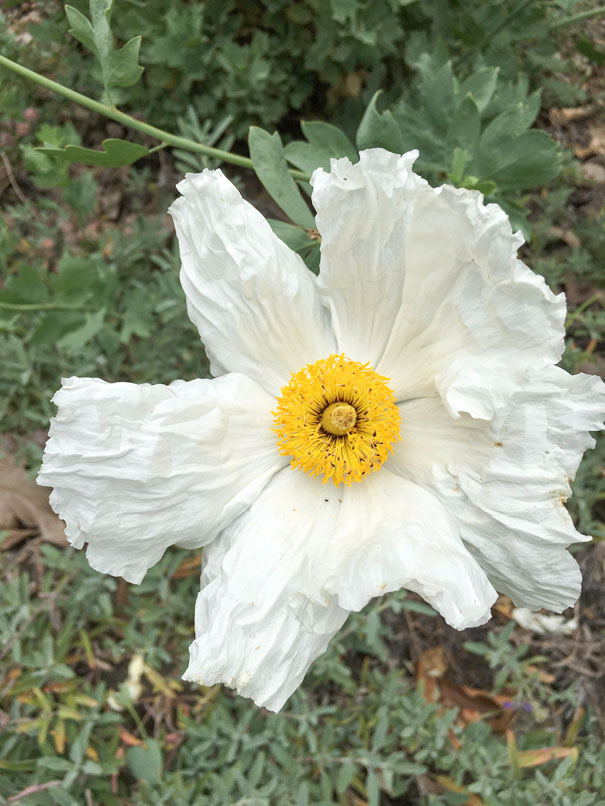LETTERS FROM THE GARDEN
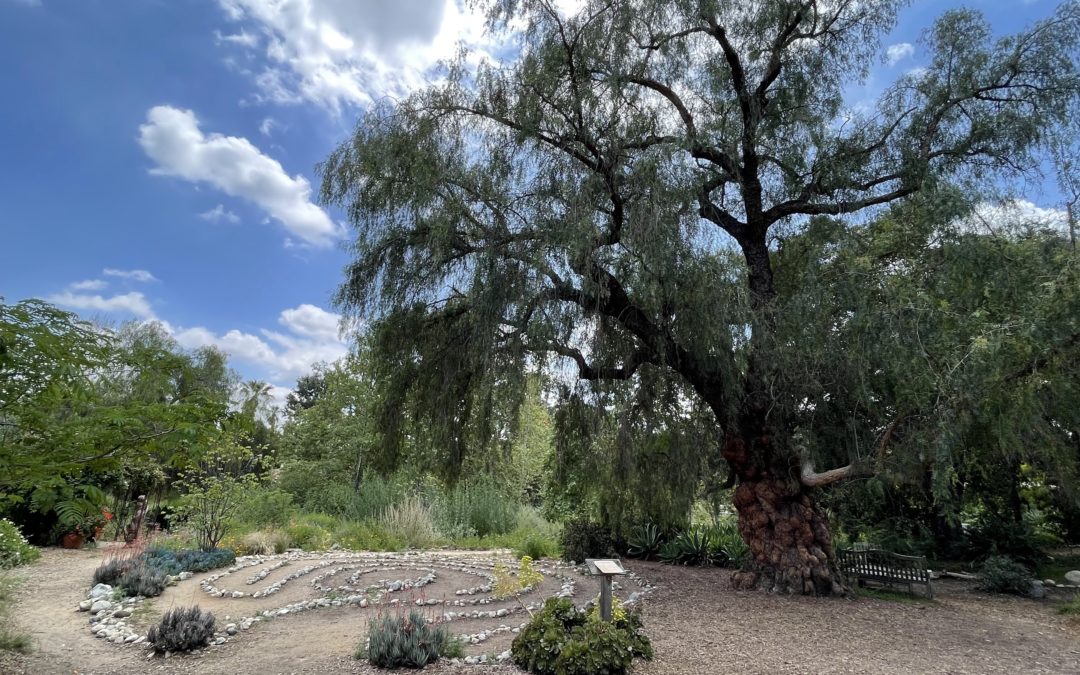
Arlington, Overworld: Schinus molle
Arlington, Overworld is a monthly series devoted to the plants of Arlington Garden. The “overworld” is the highest-level map of a videogame showing mountains, forests, kingdoms, dungeons, and treacherous wastes. Not part of normal gameplay, the overworld facilitates progression from level to level — AJ Jewell.
California pepper tree: Schinus molle, Peruvian pepper tree, molle del Peru (Spanish), mulli (Quechua)
Origin: Peruvian Andes, central Chile, and parts of Argentina
Mature height and width: 35-45 ft. tall and 50-75 ft. wide
Gardening notes: an evergreen tree often wider than tall with drooping branches; female trees have panicles of pink fruits (peppercorns); extremely adaptable, Arlington does not recommend planting this species, because it is classified as invasive by the California Invasive Plant Council; due to the threat this species presents, all female trees have been removed from Catalina Island to prevent competition with native oaks.
THE MASSIVE “CALIFORNIA” pepper tree pictured above was one of only eight trees on site when Arlington broke ground in 2005. The common name “California” is a misnomer, since the species is endemic to Peru and Chile.
Schinus molle trees produce pink fruit “peppercorns” that are eaten by humans and birds—but be cautious! The tree is a member of the cashew family and presents a documented potential danger to people with nut allergies. In fact, there was a widely publicized dust-up between the FDA and France about the health effects of pink peppercorns in the 1980s.
Authorities continue to disagree about the risks associated with eating the fruits even for non-allergic people: an official Queensland Australia government website lists them as potentially toxic to humans and others continue to caution about dangers specifically to children, pigs, and poultry. That said, they continue to be widely sold and eaten in the United States, and they have been fermented and consumed in Peru for over a thousand years. read more…
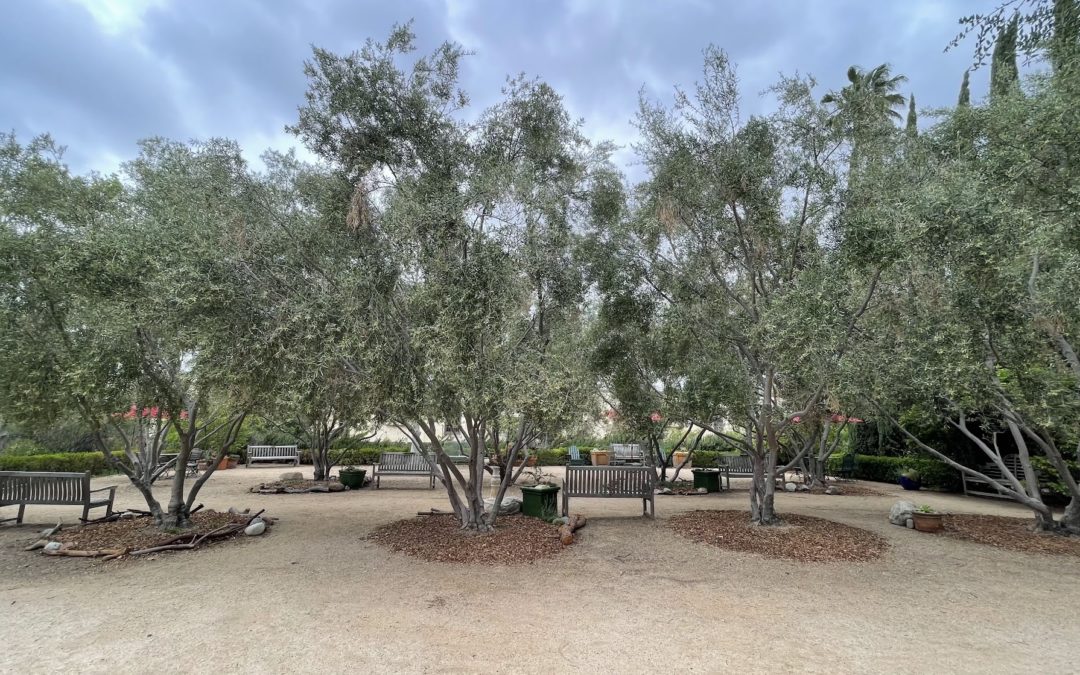
Arlington, Overworld: Olea europaea “Wilsonii”
Arlington, Overworld is a monthly series devoted to the ecology, history, horticulture, and biology of plants in Arlington Garden. The “overworld” is the highest-level map of a videogame showing mountains, forests, kingdoms, dungeons, and treacherous wastes. Not part of normal gameplay, the overworld facilitates progression from level to level — A.J. Jewell.
Fruitless olive: Olea europaea ‘Wilsonii’
Origin: Mediterranean Basin
Mature height and width: 25-35 ft. tall with canopy up to 30 ft. wide
Gardening notes: requires supplemental water when young, tolerant of heavy pruning and a variety of soil types, flared trunk requires space to grow (Perry 2010) but can be shaped into hedges
OLIVE TREES ARE A FAMILIAR SIGHT in the Mediterranean Basin and throughout Southern California where they are common components of residential landscaping and restaurant decor. The trunks of older specimens can look like taffy twisted up into curtains of grey-green foliage. Fruiting trees produce olives and also a gooey patina of dark fruits beneath their canopy. The cultivar grown in the olive allée – “Wilsonii” – is a so-called “fruitless” olive and is popular in landscapes where gardeners do not want a mess.
“MORIA” IS A NAME FOR A SACRED OLIVE
According to old tales of the Mediterranean Basin, the ocean god Poseidon and the parthenogenetic goddess of knowledge Athena once competed to be the patron of a famous city in Greece. In some tellings of this story, each god offered the city a token. read more…
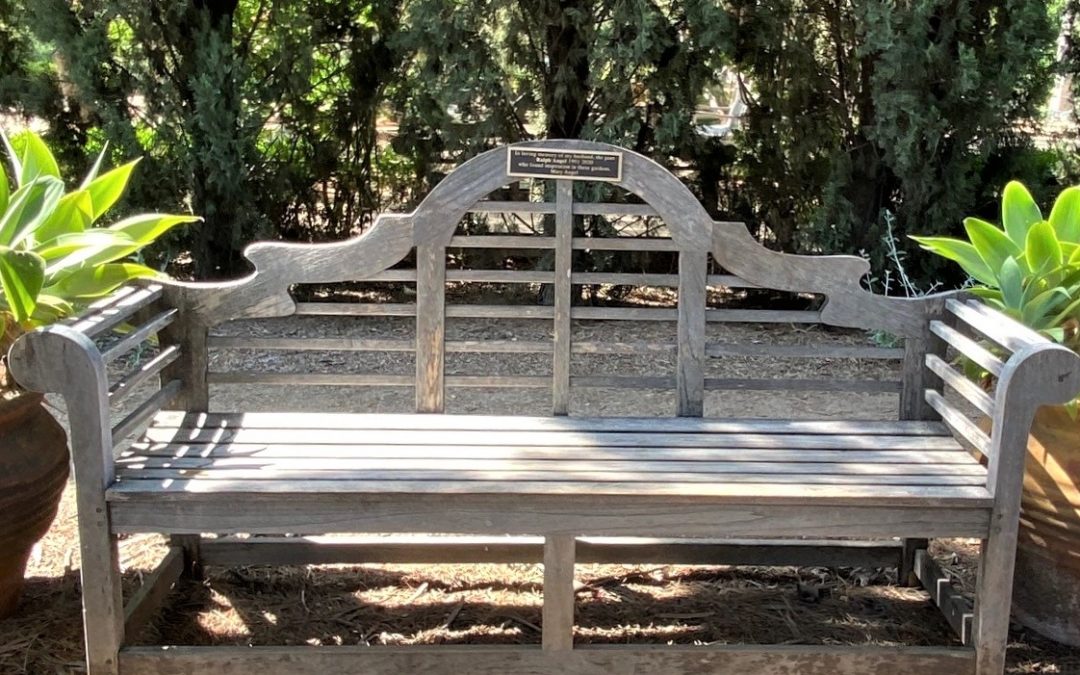
The Poet, Ralph Angel
Ralph Angel is the award-winning author of five books of poetry and a bilingual translation of the Federico García Lorca collection, Poema del cante jondo / Poem of the Deep Song. His most recent work includes entropia, a collection of thirty-one images, Strays, a limited-edition chapbook of poems, and two new manuscripts coming out in the fall of 2023.
Mary Angel is a writer and retiring corporate executive who is excited about the next chapter of her life, which will include completing her new manuscript and volunteering at Arlington Garden.
AJ: This past October, Mary, you organized a poetry reading in the garden for your late husband, the award-winning poet Ralph Angel. Would you mind saying a bit about the poetry reading? Who did the reading? What inspired you to hold the event?
MA: Arlington Garden was one of my husband’s favorite places. He brought me there early on in our relationship with a childlike joy, knowing we were about to enter a magical place. He walked me through the garden, stopping to admire each plant and flower. He also brought friends who were visiting us there to share this hidden gem with them.
Often, if he was stuck on a line while making a poem, he would go to the Garden, find a bench to sit on, listen to the birds, and take in all the sights and smells. It would help him get out of his head and back to the poem.
My husband passed away unexpectedly after a brief illness in March of 2020 at the cusp of the pandemic. I went through much of my grieving process in isolation. When the lockdown finally eased up, I returned to Arlington Garden and found a sense of peace there. Knowing this was such a special place to him, I donated a plaque on a bench in his memory in the pine forest section. Now it is my special place too, because when I go there and sit on the bench, listen to the birds, and take in all the sights and smells, I feel like I’m seeing it all through his eyes.
Last month, I invited some of our dear friends and poets to the Garden to read some of Ralph’s poems and share their stories of him to honor his memory. read more…
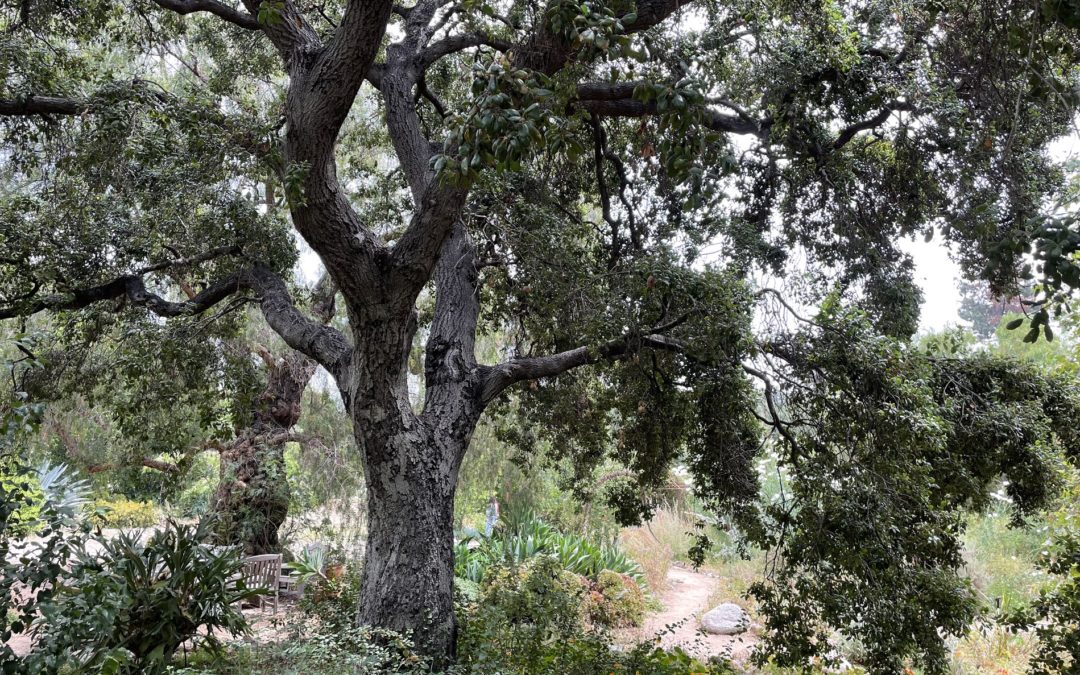
Arlington, Overworld: Quercus agrifolia
Arlington, Overworld is a monthly series devoted to the ecology, history, horticulture, and biology of plants in Arlington Garden. The “overworld” is the highest-level map of a videogame showing mountains, forests, kingdoms, dungeons, and treacherous wastes. Not part of normal gameplay, the overworld facilitates progression from level to level — A.J. Jewell.
Coast live oak: Quercus agrifolia, encina/encino (Spanish), weť (Tongva)
Origin: California Floristic Province, coastal regions up to Mendocino
Mature size: trees often wider than tall: 30-60 ft. tall, 40-70 ft. wide
Gardening notes: evergreen, cupped, holly-shaped leaves; develops multiple trunks with space and time; trees live for 250+ years with much older specimens recorded; tolerant of hot fires; keystone species in oak woodlands and an excellent habitat plant; avoid changing grade under the tree canopy.
THE COAST LIVE OAK pictured above is over 100 years old. It was one of 8 trees at Arlington Garden when it was founded in 2005, and the tree looks largely unchanged since that time. Of course, if you had been a rock or a mountainside during its early years, with your unblinking mineral eyes you would have seen branches fork like lightning across the sky and trunks explode upwards. Despite looking unchanged, coast live oaks like this one undergo relatively rapid growth during maturation, growing to 40 ft in a measly 20 years. (more…)

Chitral in the Monsoons: Tahereh Sheerazie
Tahereh Sheerazie is Head Gardener at Arlington Garden. In this travelogue, she shares her experience hiking through the 2022 monsoons in Chitral, Pakistan that caused record-breaking flooding and describes some of the resilient people and landscapes she met in the high mountains.
We knew it would rain in Chitral (Pakistan) for the first week of our scheduled trek. Our guide Ishfaq was convinced the rain would last only a day or two, so we took our chances. We had picked the end of August to do the journey, since locals had told us it’s the best time of the year to visit Chitral. The monsoons would have subsided; the weather would not be too cold nor too hot; and most of the crowds would have left, since schools reopen in mid-August. It turns out that the monsoons had not let up. But the crowds had definitely left! read more…
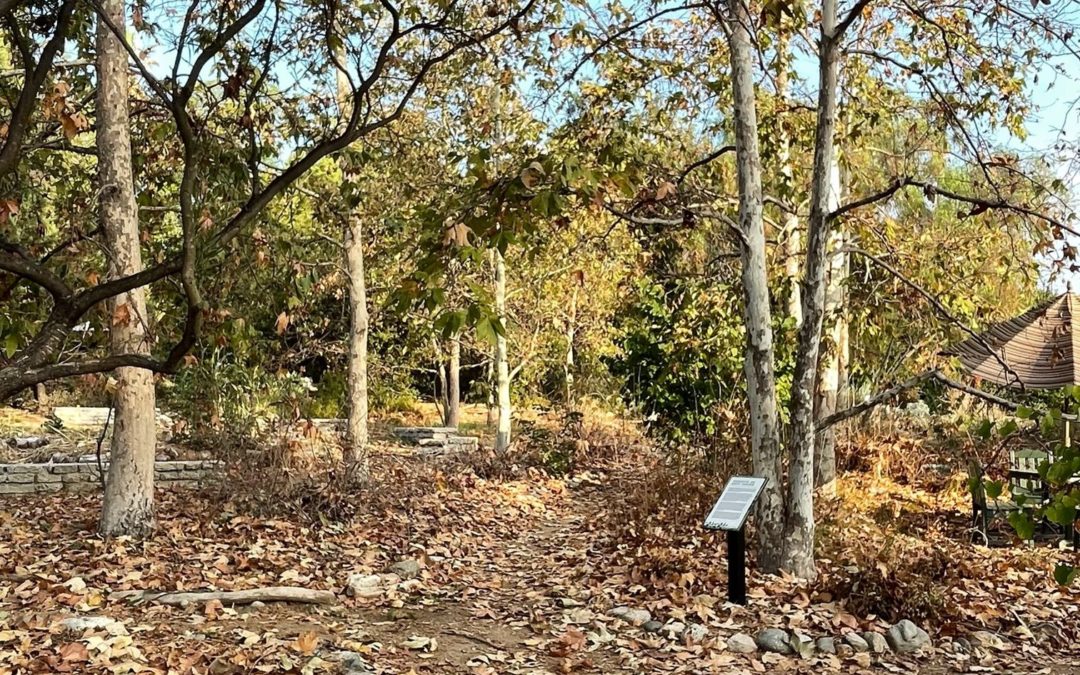
Arlington, Overworld: Platanus racemosa
Arlington, Overworld is a monthly series devoted to the ecology, history, horticulture, and biology of plants in Arlington Garden. The “overworld” is the highest-level map of a videogame showing mountains, forests, kingdoms, dungeons, and treacherous wastes. Not part of normal gameplay, the overworld facilitates progression from level to level — A.J. Jewell.
Western sycamore: Planatus racemosa, aliso (Spanish), sā-vār or shă-var’ (Tongva)
Origin: California Floristic Province, riparian areas near the coast and some inland areas
Mature height and width: 40-80 ft. tall, 30-50 ft. wide.
Gardening notes: winter deciduous; thrives with significant amounts of water in well-draining soils; best planted near swales, streams, or seeps; otherwise supplemental moisture is required.
SYCAMORE TREES ARE APPARITIONS of riparian or seasonally wet habitats across Central and Southern California extending into Mexico. The pale white and grey trunks of mature specimens can reach several metres in circumference, growing at odd angles from the ground with branches gnarled and leaves muttering in the wind. The local El Cajon author and postal worker W.S. Head fancifully but correctly called this species “the Queen of the elfin forest” and cites “someone” as calling it “the ghost that stands with its feet in the water” [Head, 41]. read more…
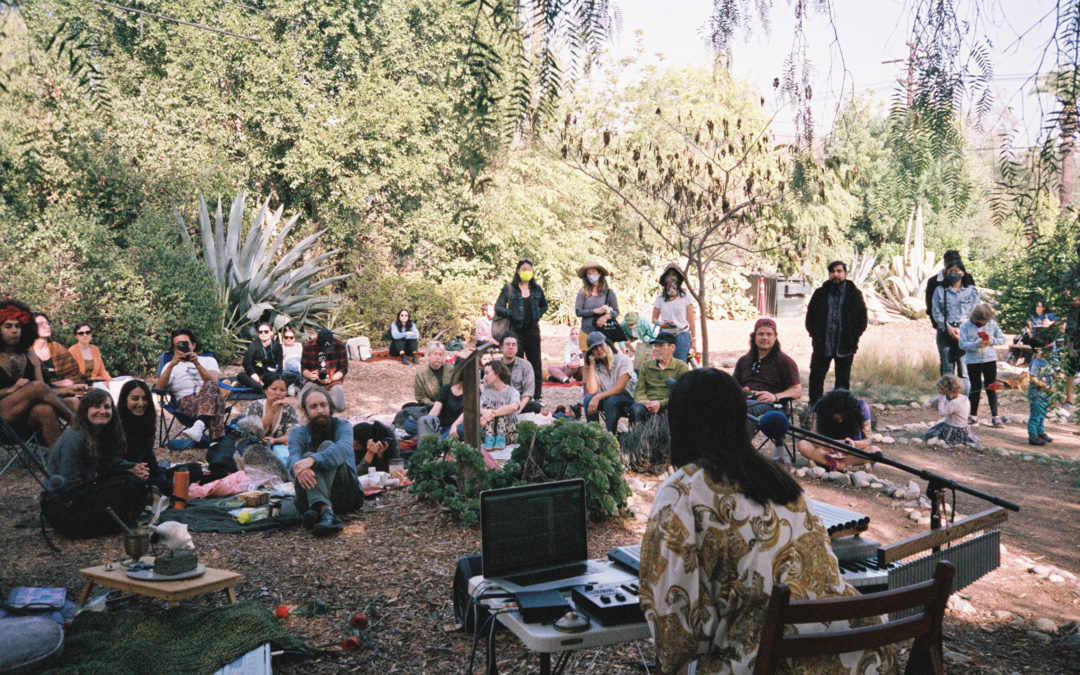
Sound is a Conduit w/ Brian Schopfel
Brian Schopfel is the founder and CEO of sound experiences producer Floating who will be curating Autumn in the Garden. The LAT recently profiled Floating here. Read more about how nature changed his life here.
AJ: For those who don’t already know, what is Floating?
BS: Floating hosts weekly sound and nature experiences in and around Los Angeles.
AJ: You describe Floating’s events as “sound based experiences.” I assume music is one sort of sound based experience, what are the others? What sets them apart from music, as it might ordinarily be conceived?
BS: The artists and practitioners who share their talent with our community tend to embrace the natural improvisational and spontaneous aspect of our events; most don’t bring a set list; some rehearse ahead of time; some play off of their collaborators, the space and the audience; some transform the energy of living plant organisms into sound; sometimes it is simply standing quietly, listening to the sounds that nature is providing. We view sound as a conduit to having a memorable, grounded experience by enhancing one’s ability to open their eyes, ears & mind to what is going on in that exact moment. Sound encourages a heightened sense of presence. read more…
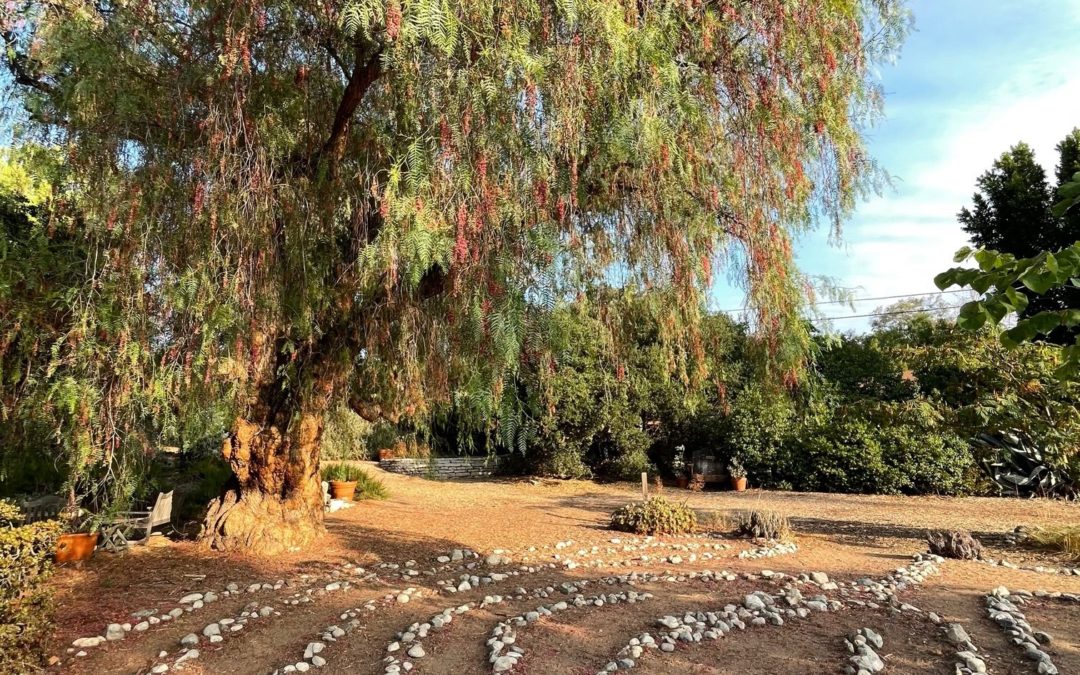
2022 Summer Garden Report
We are reaching the end of a particularly brutal summer, so it is time for a garden update!
Let’s start with the obvious. Visitors will notice that the plants in the garden – with some notable exceptions that I’ll mention later – have faded to the subtle colors of dormancy. Leaves have fallen from golden currants and elderberries, leaving bare stalks and stems. The leaves of others have simply shrunk and curled in place. Some leaves wait to expand again with the winter rains. Many will fall off later in the season. Nearly everything, both native and non-native, is in the watchful sleep of dormancy.
Arlington garden is by mission a mediterranean-climate garden. We grow plants adapted to climates with dry summers and mild, wet – or, at least, wetter – winters. There are only five regions on the planet with this weather pattern, which means we are lucky to garden here. read more…

Health Benefits of the Urban Tree Canopy: Paloma Avila
Paloma Avila is a birder, gardener, tiny-owl-enthusiast, and certified CA naturalist. As Arlington Garden’s former Program and Development Manager, she piloted the Roots and Regeneration public program series. She is presently Grants Writer at the Trust for Public Land.
Faced with climate change, ordinary life in Southern California will become more difficult. Surface temperatures will increase in urban areas, creating hotter urban microclimates; heat waves will cause numerous health problems; and dust domes will concentrate unhealthy heat and pollution over cities.
Los Angeles and its surrounding cities can expect more extreme heat events in the years to come. Cities have a many impermeable surfaces – such as buildings, sidewalks and roads – that tend to trap and retain heat, causing an “urban heat island” effect. Not only will people be affected by the high temperatures, air quality will worsen as well. According to a study on climate change and the Mediterranean climate by Paz et al., high temperatures in cities tend to raise the levels of ozone and pollutants (1).
Our region can mitigate some of these negative health effects by focusing on our tree canopy. read more…
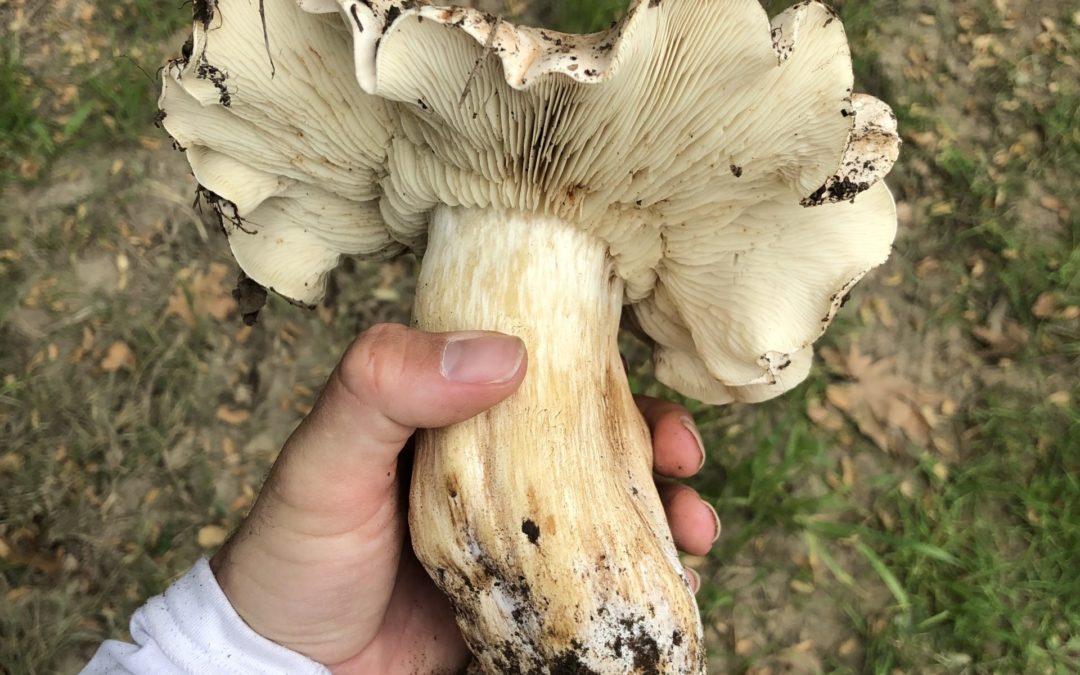
Exploring the Mycoverse: Aaron Tupac
Pictured: Oak-loving Trich (Tricholoma dryophilum)
Aaron Tupac is the organizer behind Exploring the Mycoverse, a community science project dedicated to fungi and hosted by Arlington Garden. Tupac-Thompson organizes “fungi reading discussions, fungi film screenings, fungi forays, fungi feasts … all to connect fungi-curious folks with each other and fungi.” The following interview is a wide ranging discussion of fungi and fungi-plant relationships. It been edited and organized for clarity and length.
Andrew Jewell (AJ): Hello Aaron! You organize and facilitate the local community mycology group called “Exploring the Mycoverse.” What is the Mycoverse?
Aaron Tupac (AT): Okay, golly gosh, I will probably go off on some of these topics … it’s hard for me not to!
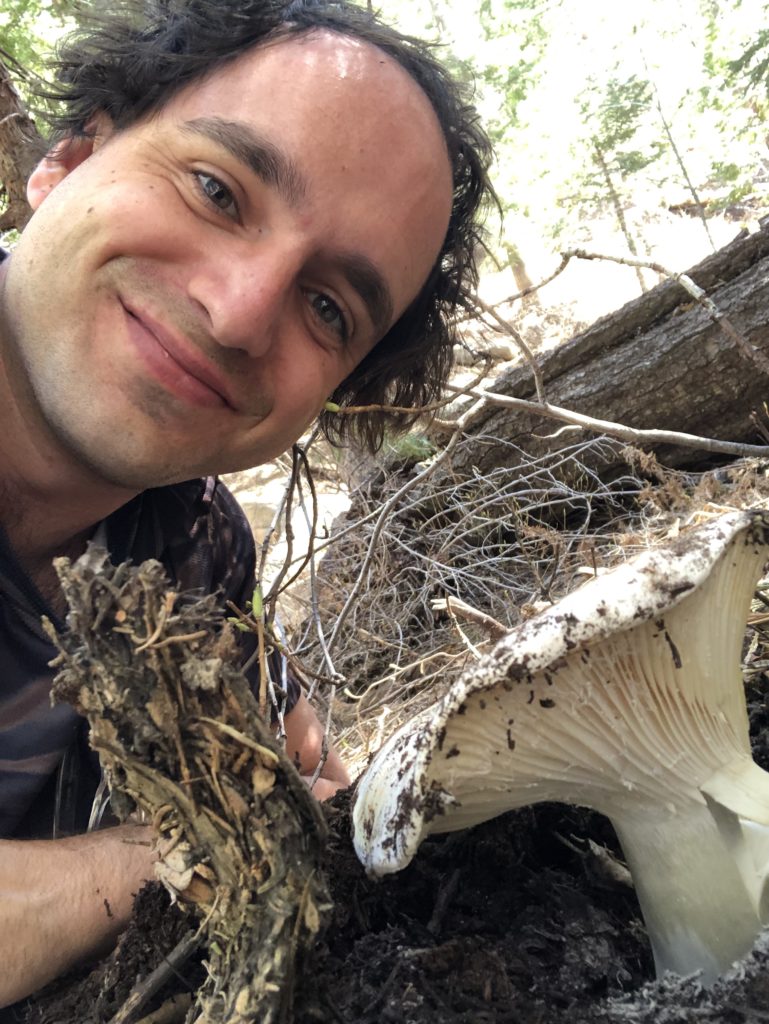 AJ: I would love to facilitate you going off on the topics that you care about! Everyone seems to be passionate about everything in the age of self-marketing, but a lot of things in the world are worth being passionate about, and fungi are definitely one of those!
AJ: I would love to facilitate you going off on the topics that you care about! Everyone seems to be passionate about everything in the age of self-marketing, but a lot of things in the world are worth being passionate about, and fungi are definitely one of those!
AT: So, the “Mycoverse” is a term coined by the North American mycologist Paul Stamets, to describe how life on earth has its origins from fungi. For example, it is thought that plants moved on to land over 450 million years with a fungal symbiotic relationship to harvest nutrients from the land in exchange for sugars produced by the plants’ ability to photosynthesize. It’s an ancient relationship. Everywhere we look we are surrounded by fungi. We are entangled in the mycoverse: the world co-created by fungi. I can talk about this stuff all day … !
AJ: What about being into mushrooms in Southern California? Isn’t it too dry for mushrooms?
AT: Most people don’t think to go looking for mushrooms in Southern California, but they do exist! Just last month I went up into the San Gabriel Mountains up to where the snow was melting and found a species of mushroom – Subalpine waxycap, Hygrophorus subalpinus (pictured above)– that had never been documented on iNaturalist this far south in Southern California. There’s so much exciting research and conservation work to be done.
AJ: Did you hunt for mushrooms as a child? Did you have (or do you have) a favorite fungus?
AT: It’s hard to say which is my favorite fungus. I can say one of my favorite to teach folks about since it’s very common in our area, is Schizophyllum commune, Split-gill fungus. It currently can even be found in Arlington Garden year round on the decomposing hugel logs in the three sisters garden! On fungi forays I love introducing folks to these shelf-like mushrooms that grow on dead trees. They look rather alien with fuzzy textured caps and gills that split when the mushroom dries out.
Also fun fact – Schizophyllum commune (pictured below) has 23,328 distinct mating types, akin to what we call sexes. It’s pretty much the ultimate queer, non-binary fungus. As a non-binary queer person, it’s important to me to share the queer stories of our more- than-human neighbors. read more…

